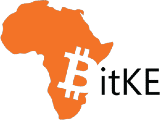Average consumer price inflation in Africa is estimated to have increased by 3 percentage points to 17 percent in 2023, from 14 percent in 2022, a new report by the Africa Development Bank (AfDB) says.
“The increase reflects a combination of higher local food prices induced by drought-related domestic supply shortages, liquidity overhangs from pandemic-related fiscal and monetary policy stimulus undertaken in 2020–21, and the pass-through effects of currency depreciation against a strong US dollar propelled by high interest rates in the United States,” said the report.

- East Africa registered the highest inflation rate at 26.5% in 2023, with Sudan leading at 245.3%
- West Africa follows with an inflation rate of 20.3%, led by Sierra Leone and Ghana
- North Africa saw the largest increase in inflation, rising by 8.1 percentage points to an average of 16.3% in 2023, driven by rising prices in Egypt and geopolitical tensions
- Central Africa’s inflation rose by 3.5 percentage points to 10.3% in 2023, with the Democratic Republic of Congo experiencing a 10.6 percentage point increase
Southern Africa is the only region where the inflation rate fell, dropping from 10.8 percent in 2022 to a single digit of 8.6 percent in 2023, due to declines in Angola, Botswana, South Africa, and Zimbabwe.
Related to the inflation, most African currencies depreciated further against the stronger U.S. dollar in 2023, under pressure from sustained high global interest rates and continued global uncertainty fueled by geopolitical and trade tensions, said the Africa Development Bank.
“For instance, Nigeria’s Naira depreciated by 95.6 percent in 2023. This depreciation largely reflected market correction following reforms undertaken in the foreign exchange market in June 2023, which led to the floating of the Naira.
The second biggest losses were for the Angolan Kwanza (32.8 percent) and the Zambian Kwacha (15.4 percent). Both countries have experienced limited foreign currency liquidity on the market, and in Angola the situation was exacerbated by lower oil prices and the end of the moratorium by Chinese creditors.”

Notably, the depreciation in Zambia was further compounded by weak market sentiment due to protracted debt restructuring.
However, due to their total or partial peg to the Euro, which regained some strength against the dollar in 2023, certain currencies such as:
- The CFA Franc
- The Moroccan Dirham
- The Cabo Verdean Escudo
- The São Tomé E Príncipe Dobra, and
- The Comorian Franc
pared their earlier losses and gained slightly against the U.S. dollar in 2023.
Follow us on Twitter for the latest posts and updates
Join and interact with our Telegram community
________________________________________
________________________________________







